Autumn is poetically known as the season of mists, mellow fruitfulness and beautiful displays of fiery foliage as the deciduous species of trees, shrubs and perennials growing in our gardens, and allotments ready themselves for winter hibernation.
Not quite as poetic is the fact that when those burnished leaves do finally drop to the ground, they can often reveal a host of ugly eyesores that we’d prefer to remain hidden from view. Unsightly boundary walls and fences, for example, that make us wince every time we look at them. Shabby garden sheds we’d much prefer not to see. Or those essential but inevitably unlovely utility areas of the garden used to store bins, washing lines, bikes and other equipment.
Not only that, autumn’s leaf drop can also abruptly kill a garden’s air of privacy so that areas that previously provided us with leafy seclusion in spring and summer suddenly feel open and all too public, exposing us to view from passing traffic, pedestrians and neighbouring properties. Or (just as bad) giving us unwanted views into other people’s homes and gardens.
As if all that wasn’t enough, our gardens can feel colder, windier, noisier and dustier without the seasonal foliage of deciduous species to help provide shelter and filter wind, air and noise pollution. Almost all at once, what was the quiet hum of passing traffic can become intrusively loud, once-gentle breezes become strong gusts, and once-sheltered areas become anything but.
RM Block
Last but not least, gardens can also lose much of their sense of structure if the defining soft landscaping elements of their design (their trees, shrubs, climbers, hedges, living screens, beds) rely on predominantly deciduous species.
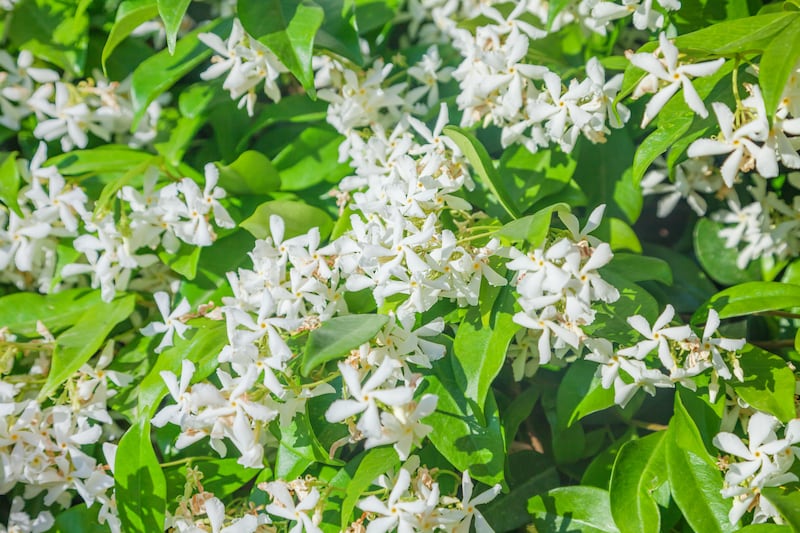
What to do? Faced with this annual seasonal dilemma, it’s natural to assume that the obvious solution is to grow only evergreen species. But in fact this creates its own set of challenges, often resulting in a monotonous lack of seasonal change that can make even the prettiest of gardens seem dull and oppressive, or creating large areas of dense, dry shade where very little flourishes.
Instead the answer – and the secret of almost all good gardens – is to use planting that features a balance of both evergreen and deciduous species, cleverly combined to maximise their very best attributes. The ideal proportion? For best results, most garden designers recommend a ratio of roughly 40 per cent or 50 per cent evergreen to 60 per cent or 50 per cent deciduous, focusing on evergreen species chosen to provide a range of contrasting growth habits and foliage shapes as well as year-round structure.
The crisp silhouette of a perfectly-pruned Portuguese laurel or yew hedge, for example, will provide a hardy, elegant winter backbone to any garden as well as precious shelter and privacy. But it will also act as a handsome evergreen backdrop for the seasonal theatre of deciduous specimen shrubs and trees such as witch-hazel (Hamammelis), Japanese acer (varieties of Acer palmatum), the smoke bush (Cotinus coggygria), lilac (Syringa) and paniculate hydrangeas (examples include Hydrangea ‘Wim’s Red’, Hydrangea ‘Kyushu’ and Hydrangea ‘Limelight’) as they explode into bloom and leaf, or for a pretty ribbon of spring and autumn-flowering bulbs planted at their feet.
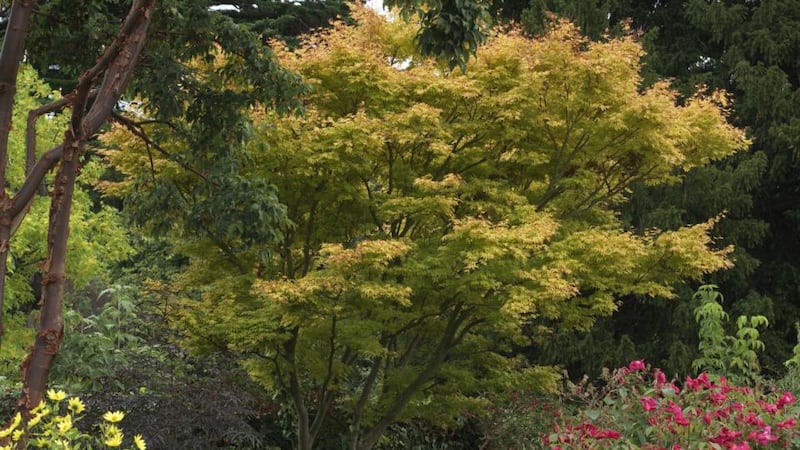
Likewise a series of sculptural evergreen box balls planted to “punctuate” a garden space and give planting a sense of year-round permanency can be leavened with a frothy, seasonal mix of wildflowers. Or the architectural silhouette of a shade-loving evergreen like the autumn fern (Dryopteris erythrosora) can be the yin to the yang of a deciduous, delicately-beautiful, shade-tolerant ornamental grass like Hakonechloa macra.
Underplant a statuesque, deciduous, spring-flowering shrub like the star magnolia (Magnolia stellata) with a resiliently tough, drought-tolerant, shade-tolerant, long-flowering evergreen perennial such as the bigroot geranium (Geranium macrorrhizum), turf lily (Liriope muscari) or the tough-as-old-boots Pheasant grass (Anemanthele lessoniana) and you get the best of both worlds. Or flip it around, so that you’re underplanting handsome evergreen flowering shrubs or trees (for example, camellia, choisya, Arbutus unedo, Osmanthus x burkwoodii) with decorative, deciduous plants such as lady’s mantle (Alchemilla mollis), Brunnera macrophylla or autumn-flowering cyclamen (Cyclamen hederifolium), all of which will cope with the dry shady growing conditions beneath their leafy canopies.
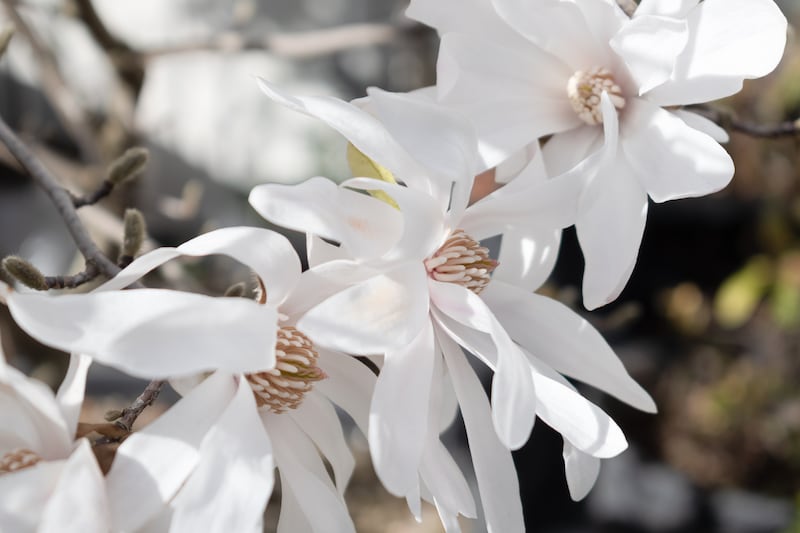
The same goes for climbers. Always make sure to use a mix of evergreen ornamental species such as star jasmine (Trachelospermum), Hydrangea seemannii, Pileostegia viburnoides, and Clematis ‘Avalanche’ to keep your garden walls and fences looking well-dressed throughout the year as well as to provide privacy and shelter. But also make sure to add some deciduous climbers to ring in the seasons (for example, varieties of Clematis alpina for its bell-shaped spring flowers, climbing roses and honeysuckle for early summer scent and colour, and varieties of Clematis viticella and Clematis tangutica for late summer/ autumn colour).
Don’t feel that you have to stick to classic garden evergreen trees and shrubs such as box, bay, yew, laurel, holly, skimmia, hebe, euphorbia, pieris, pittosporum, mahonia and sarcococca. An interesting new palette of hardy architectural evergreens is becoming increasingly popular with Irish gardeners, many of them statuesque species with large handsome leaves that are being used to give a lush, subtropical feel to sheltered, urban gardens. Examples include varieties of schefflera, fatsia, pseudopanax, bamboo and tetrapanax as well as hardy palms and cycads. Just bear in mind that the same ideal ratio of evergreen to deciduous species holds true in gardens expressly designed to highlight the beauty of foliage rather than flowers. So ring in the seasonal changes with deciduous foliage plants such as hosta, arisaema, podophyllum, rodgersia, ficus, aralia, paulownia, miscanthus, macleaya, molinia and calamagrostis.
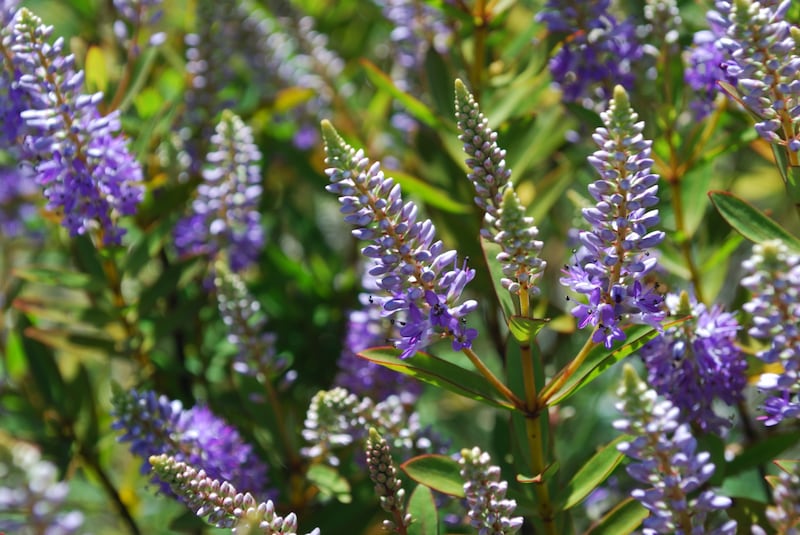
This way, when autumn arrives you can savour its fiery, bittersweet beauty in all its splendour while simultaneously celebrating the fact that your garden will remain a thing of serene and leafy beauty throughout the winter months. It’s called having your cake and eating it, and it tastes good.
This Week in the Garden
Garden ponds should be given a gentle annual tidy-up at this time of year to cut down and remove any dead and decaying foliage. If it’s a small pond, it’s a good idea to gently scoop out some of the excess sediment and sludge from the bottom to stop it taking over. But make sure to leave a 3-5cm deep layer in place to feed the root systems of any water plants and take great care not to damage or puncture the waterproof liner. Finish off by covering the surface of the pond with some garden netting to prevent falling leaves from entering the water as these will steal oxygen from fish, frogs and other pond life as they rot down.
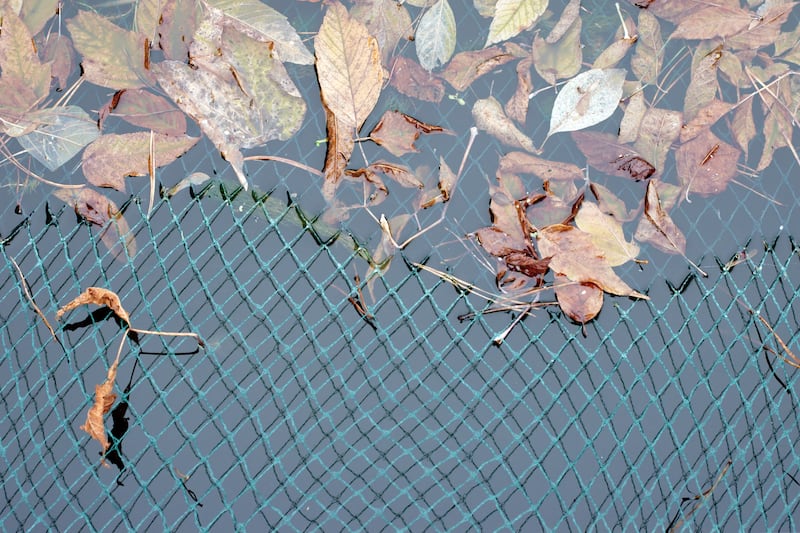
If you took cuttings earlier this year and they’re now showing obvious signs of having rooted well, then October is a good time of the year to pot them up into individual larger pots before placing them in a sheltered part of the garden or allotment or in an unheated glasshouse or polytunnel to grow on. To encourage bushy, branching plants, nip out the growing tip. To check if cuttings have successfully rooted, look for signs of new growth and examine the base of the pot to see if there are any signs of new, young roots pushing through the drainage holes. If not, then gently pull the cuttings. If they loosen very easily, firm them back in and leave for several more weeks before checking again for the above signs.
Dates For Your Diary
Tuesday, October 25th (8pm); Woodford Dolmen Hotel, Carlow Town; Taking a Field and Making a Garden, a talk by the gardener and artist TJ Maher of Patthana Garden on behalf of the Carlow Flower Club; admission €10, all welcome
Thursday October 27th (8pm); Garryduff Sports Centre, Rochestown, Cork, T12ER22; For the Love of Plants: a detailed look at garden plants and how best to grow them, a talk by the West Sussex-based gardener, garden writer and lecturer Benjamin Pope on behalf of Cork Alpine Hardy Plant Society; admission €10
Thursday, October 27th, until Saturday, October 29th; National Botanic Gardens, Glasnevin, Dublin; Planting for Tomorrow’s World: A Global Perspective, the Northern Ireland Heritage Gardens Trust Annual Conference takes place with a range of speakers; tickets available via nihgt.org
Friday, November 6th, until Sunday, November 8th; Anamadu Fields, Kilnagross, Co Leitrim; Establishing a Cut-Flower Business, a three-day intensive course covering all aspects of establishing a cut-flower business with flower farmers Ciaran and Kealin Beattie of Leitrim Flowers; €320; pre-booking essential, see leitrimflowers.ie




















